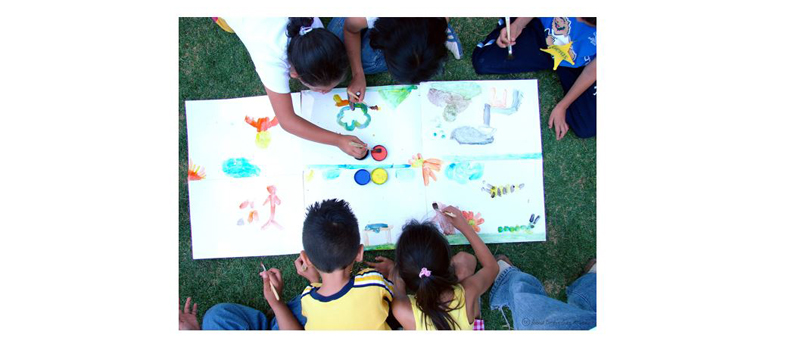2.4 Child Rights Ecology Model
Throughout this unit we have repeatedly referred to the contextual factors, both internal and external, that affect, and are influenced by the holistic development of the child and his/her realization of child rights:
- Children’s inner world (cognitive, emotional and spiritual)
- Children’s outer world (physical, social, behavioural)
- Peers (other children and youth)
- Family
- Community, natural and built environment
- Civil Society, government and non-governmental
- Cultural, social, economic, civic and political
The Child Rights Ecology Model helps to bring this conceptualization to life. It demonstrates how the child contributes to his/her social environment while simultaneously being affected and served by it; thus highlighting the interconnectedness of child development and societal well-being.
Research indicates that stronger links between each system of circles result in children having healthier connections through positive relationships with their human and natural environment, which in turn leads to greater resilience and healthier individual and community development outcomes. Conversely, in situations of social and political breakdown in which these supportive and protective mechanisms are eroded or damaged, children’s developmental outcomes will be negatively impacted (Jessor, 1993; Shonkoff & Phillips, 2000; Werner & Smith, 1982).
The precise structure of the Child Rights Ecology will be determined by the child’s socio-cultural environment. Thus representations of family, community, civil society and government will vary for each child in the context of their unique social configuration and their culture. This interpretation also demonstrates how the child contributes to his/her social environment, while also being affected and served by it.
Not only does the Child Ecology Model highlight the various contextual factors that interact with the child and his/her development, it also serves as a guiding framework to help identify how responsible adults can support the holistic development of children and embed child rights in their approaches and practices.
Now you have finished this unit:
Do this
Now you have almost completed this unit, you might like to:
-
Post a message to the unit forum.
-
Review or add to your Learning Journal.
-
Rate this unit.
Try this
You might also like to:
-
Find out more about: The International Institute for Child Rights and Development (IICRD)
-
Use FM to talk live with other learners
-
Create a Knowledge Map to summarise this topic.
2.3 The relationship between rights and needs
